The Alto Monferrato: Ovada and Acqui Terme
Municipalities of the Acquese
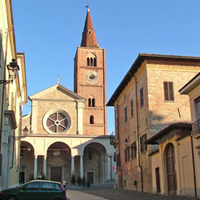
Acqui Terme
Acqui Terme is a town in the province of Alessandria located in the south-east of Monferrato is wet on the right bank of the river Bormida. Acqui Terme was destroyed by the consul Marco Popilius in 173 bC became a Roman settlement, its economic importance began only since 109 when was built the Via Aemilia Scauri, but mainly thanks to its thermal baths among the best in the empire. With the end of the Roman Empire Acqui suffered a long period of decline. Conquered by the Longobards later became part of the Duchy of Asti. Starting from 978 ruled by Bishop Guido began the construction of the cathedral and the first fortification walls. He became a free commune since 1135, was the Marquis of Ponzone aims but also of the Marquis of Monferrato. Followed the fate so acquired Monferrato until the annexation of Savoy. From the gastronomic point of view Acqui Terme is known for its macaroons and kisses Acqui characteristic, as well as truffles and mushrooms to taste with the excellent local wines from who remember the Braghetto DOC is a sparkling red dessert wine, Moscato DOC a crisp white dessert wine, but other wines like Dolcetto and Barbera.
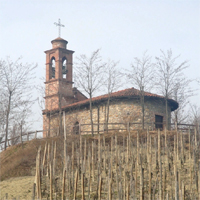
Morbello
Morbello is about 570 meters above sea level. The appearance of the area is hilly, almost completely covered by forests of chestnut and oak. And 'an area rich in surfacing water but even more underground. The country is predominantly distributed in three fractions arranged in a pretty short distance from each other (Piazza, Vallosi, Costa).
The climate is particularly happy because Morbello enjoys excellent exposure. On Mount Laione we can admire the majestic oak: her hair grows freely in all directions and has a shape and almost perfect proportion. Morbello is also characterized by lush vegetation and its woods are particularly generous porcini mushroom species and ova intense flavor. Important product of the small country is the chestnut that hosts the famous "Chestnuts" every third Sunday of October.
Shifting the focus then on the wildlife, we can immediately reaching Morbello note the presence of countless deer, foxes, badgers, martens, squirrels, weasels, dormice, voles and especially wild boar. Keep in mind that in August there is the "Wild Boar Festival" which attracts many lovers of this delicious meat. As far as the birds are hawks, kestrels, partridges, pheasants, cuckoos, jays, titmice, woodpeckers. Thanks to the presence of some local companies, Morbello also offers an excellent wine.
Morbello is the right country for those on foot, horseback or mountain bike they want to follow paths and driveways of the farmers once used and now recovered and replicated to the benefit of those who can appreciate the many natural activities of the places visited.
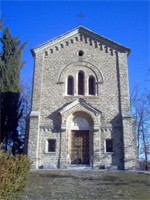
Grognardo
The town's name is mentioned for the first time in the foundation and donation of the Abbey of St. Quentin Spigno (year 991) with the name of spider. Grognardo is dominated by the ruins of the old castle thousands of years. There are reports that in the sixteenth century, fortified around the building, a cluster of houses joined to each other interspersed with three doors, allowing, in case of danger, an easy defense of the village and its inhabitants. In the eleventh century, St. Guido, Bishop of Acqui, built the first church, St. Felix (pictured), built a church to affirm Christianity in the country. Grognardo, born probably for defensive purposes on a hill called Poggio, during the Renaissance, under very favorable position for trade, has seen the flourishing of the settlements mentioned in several deeds as the Villa of the Plan.
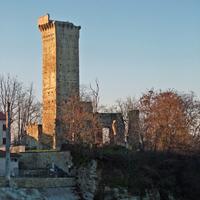
Visone
Visone shares the same origins of most of the municipalities that now belong to the province of Alessandria: these areas were frequented by several pre-Roman and post-glacial populations of Ligurian origin, divided into tribes, mainly dedicated to agriculture and hunting.
The arrival of the Roman Empire in the area, between the second and first century aC, not stravolse the vocation farm of these lands, and indeed stimulated the founding of a large number of small colonies that were growing their main reason for being.
The fall of these areas are subject to raids and went semi-nomadic appropriations by the Lombards, whose domain ferried the area to the gates of the Middle Ages.
Is the home to one of the most famous nougat around the northern Italy.
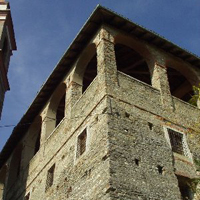
Prasco
Prasco is a charming village of Alto Monferrato. The inhabited, originally located in the valley, near the area currently occupied by the cemetery, in which you look at the medieval Roman church, in feudal times was settled around the medieval castle, architectural work dating from the twelfth century, has joined the project "castles open" and is open to the first and third Sunday of each month during the summer.
Prasco has thus become a must-cultural tourist route promoted by the provinces of Alessandria, Asti and Cuneo.
Prasco has become a must so the tourist-cultural Prasco promos you can also visit the Botanical Garden, home of Almond Mongiut in places where you can see various botanical theme areas dedicated to the Mediterranean flora, aromatic plants, to shrubs, roses and other special species.
Of some interest are also the Chapel of St. Roch, the country church of Saint Anthony and the church of San Defendente built in Orbregno the township which is the most significant of the town of Prasco.
The last weekend of July, on the occasion of the patron, there is the traditional festival with food stands, music shows and review of the typical products of Monferrato.
Prasco is valuable in the production of Dolcetto d'Ovada DOC
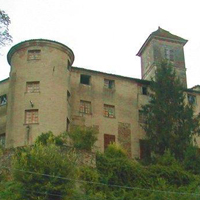
Morsasco
The Gonzaga, the Pallavicino, the Malaspina, the Centurion, the names of the noble and powerful families who have left their mark in Morsasco are the same as many other surrounding municipalities, because history was made by a small circle of families, some Piedmont Ligurian other, some even Lombardy, which they divided the territory and, if exchanged, if they fought, given the fertility of its fields and centrally located between Alexandria, Genoa and Milan.
By that time remains in the superb manor probably the twelfth century, inserted in the "Open Castles", from whose tower was possible to control the vast area stretching from the hills to the west of Acqui to beyond Alexandria to the east, and from the Monte Rosa north to south until the Ligurian Apennines.
The town, dominated by the castle, stands on a hill which offers a view of Acqui and the valley of Bormida.
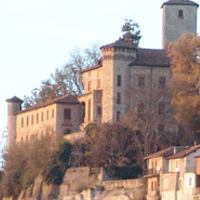
Orsara Bormida
(by Egidia Pastorino) My country, one in which my people decided, at a certain moment, to take root, is a hilly villlaggio of Alto Monferrato. [...]
The first point of contact with the country, for those who arrived with the horse-drawn tram (and, today, by car or bus), was and is represented by the San Sebastian, in the process of restoration. The church, dedicated to the saint (the inspiration for a painting of Beppe Ricci of great pathos) is located, in fact, right at the crossroads between the Via Longa (which, at that point, it joins Montà), the Borghetto , the main street (called, tout court, "the country") and the road that leads through the Costa, at Mount Atsetto, a little raised hill, which dominates the Rovanello. [...]
On top of the hill is one of the oldest and best preserved medieval castles of Monferrato, properly restored and enlarged in subsequent periods, with the addition of a wing, it has altered the essential alters original elegance, made it however, the most majestic view of who is going through the Plains and pushing the gaze up toward the sky, saw him stand on the rock. [...]
All around the country at one time the woods are green, then they gave way to compound and straight rows of vines, tomorrow, who knows, for peasant labor shortage, will return to the woods and, perhaps, bears, from which the country has derived , in part, your name, Orsara. The other part of the name is due to the river, the Bormida, which flows down into the plain large and well-crafted, where they have completed the underground passageways of the Castle.
At one time, in clear water, we caught trout and barbel, nesting on islands covered with reeds the wild ducks, they stopped to rest the birds of passage. This enchantment, today, there is no more. However, Orsara you see, looking at his wife and the Cascine, the most beautiful rainbows when the rain stopped in the air and spreads the fragrance of wet earth.
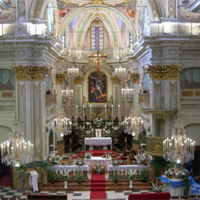
Strevi
The historic strevese Italo Scovazzi, argues that the first urban Strevi since Roman times and takes its name from "Septemviri" (an important Roman college of priests). Thesis acceptable if one takes into consideration the position of the lower village near the Via Emilia Scauri road in the first century BC joined Vado Ligure in Tortona. More romantic, however, although less reliable, the version supported in 1700 by the German poet Hans Bart. who believed that the country was founded by seven brothers from which wine lovers "Septem EBRI." In any case, the first official mention Streatham "Septevro" lwe find in the Charter of foundation of the Abbey St. Quentin of Spigno M.to of 991. It seems that only after that date, and for security reasons, you are perched in the strevesi Upper Village, and built the castle.
As shown by studies dating back to 400, the community at that time lived mainly inside the walls and was ruled by Castellano and three directors. The story spends, then, more or less anonymous until 1779, during the Napoleonic era, when strevesi rose against the French, winning a temporary city of Acqui Terme and the Bishop prendondo hostage.
Today, the town of Streatham, who recently won the nomination by UNESCO for inclusion in the territories of the world value, offers visitors the castle, after having undergone some structural changes over the centuries, contains even the great staircase and the imposing fireplace Valperga accounts. Also of note is the parish church, in which there is an apse built in the past as a defensive bastion. Inside the church, rebuilt and embellished by the artist and the helmets of Ponzone Ivaldi known as the "dumb", you can also admire a beautiful reproduction of Archangel Michael by Guido Reni.
The Municipalities of the Ovadese
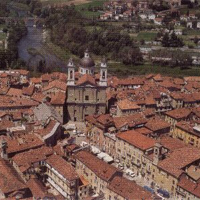
Ovada
The origins of Ovada back to Roman times. Already existed as a small village but very important, since it was at the confluence of the Stura and Orba and represented a ford on the road which then forced the sea led to the Po valley, as indicated by its name then "Vada" or "Vadum". In 967 A.D. Ottone I donated it to the Marquis Aleramo.
Later owned by the Marchesi di Gavi and the Marquis Del Bosco came to Malaspina who then, in 1277, sold it to the Republic of Genoa.
Ovada followed the fortunes of the Republic of Genoa, with the exception of a period of a few years during which he was under the dominion of the Dukes of Milan, until 1814 when, following the Congress of Vienna, passed under the sovereignty of the Kingdom of Sardinia.
In the typical arrangement of the houses and the 'alleyways' sunny colors faded by time even if the center is felt the influence of the Republic of Genoa.
On the hills that surround planted with the vine from which it produces Dolcetto DOC Ovada In the past the economy was based on agriculture and breeding of silkworms that, especially in 800, had become a major activity. The landscape and mild climate make it a favorite destination for tourism and holidays, especially during the summer months.
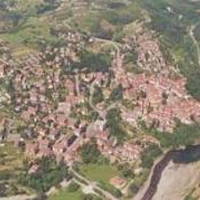
Molare
Who runs from east to west State Road No 456 that "the Turchino", connecting Genoa to Acqui Terme, Ovada surpassed the plain, before the road starts to climb towards the pass of Cremolino, it offers the spectacle of a cluster of houses perched on a hill. Molare arose, like many other villages in the area, in the shadow of a castle.
The name has an etymology Molare highly controversial. The most reliable, reported by Casalis, believes the name derived from the Grind "saxa Molaria", that is, from a quarry of millstones existing depression of the river in nearby Fontana.
The marquis "del Bosco" were the first lords of Molare. In the shadow of their castle around 1250, for reasons of greater safety thickened most of the rural population, which is the ancient town of Cerriato and Campale. Later, having Agnes, daughter and sole heir of William, Marquis del Bosco, branch alermo, married Frederick of marquis Malaspina di Gavi, brought him a dowry of half of the land Molare, Cremolino, Cassinelle, Morbello.
Malaspina Thomas, son of Agnes, built himself a castle tower with adjacent and established his residence. In 1278 Isnardo Malaspina, who succeeded Thomas, took up residence in Cremolino and in 1327 enacted the statutes that govern the affairs of the community Grind until 1467, when it came to an end the rule of the Malaspina of Cremolino and the community of molar gave at the mercy of the Marquis of Monferrato, from which he obtained special concessions of autonomy.
Of the ancient castle, home of the Marquis del Bosco, Malaspina and Spinola, as well as the tower and the gate called the Bridge, there remains no trace.
City are part of the villages of Battagliosi-Albareto, the Sanctuary of "Madonna delle Rocche-Terio", of Saint Luke and Olbicella.
At one time the largest resource of the country consisted in the cultivation of the vine, which still dominates unchallenged placed behind the hills of the town and famous for the sweet.
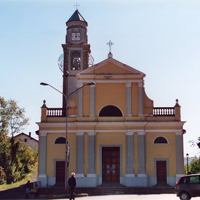
Cassinelle
In past centuries Cassinelle had much wider boundaries than the present, including the entire Upper Valley Orba, until Olbicella, passed in 1922 to the City of Molare. His story, full of fun facts and events, is a testimony of how this town was already very active in the past centuries.
For this fact, the Bishop of Acqui excommunicated them as violators of the immunity of the clergy, excommunication led to the deprivation of the right to trade with the ensuing economic crisis, the Duke then dispensed from the common contributions of one year and decreased taxes in general.
Many years after the men of Tiglieto were battling with those of Olbicella, fraction of Cassinelle for the region called Piandelfò, which disputed the use and properties with murder, robbery, retaliation, and not without an indirect action of the respective Governments. Finally, the King of Sardinia, which, owing to the Treaty of Vienna in 1702, had come into possession of the Monferrato, agreed with the Republic of Genoa to stop the scandalous issues. During the war for the succession of Austria (1742-1749) Cassinelle was occupied by troops Franco-Spaniards, who established their center of operations to harass the Austrians encamped at Rossiglione.
Cassinelle also belonged, as a fief, to the Gentiles of Genoa and of to the Spinola of Lerma.
The ruins of the castle and the walls of this village, which stands on a knoll surrounded by hills at midday d'Acqui, razed around 1830, were sure signs that the place was properly fortified in the Middle Ages.
Henry VI, in 1187, confirmed to the Monastery of Santa Maria di Tiglieto property owned in this famous abbey Cassinelle, then the country depended on the political sub-branches alleramici of the Marquis of Uxecio and the Marquis of Bosco. In 1218 it passed to the Genoese in 1224 gave him a fief at Ottone, Marquis del Bosco. Later, Henry, a descendant of Ottone gave it half his daughter Umerriera married to a consaguigno of Ponzone, but the Genoese, defeated the said Marquis, in 1277 gave it to the Malaspina of Cremolino. The Malaspina continued, however, to recognize the high dominion of the Republic, which often renewed and prevented the usurpations that bullies and more astute members of the family claimed to exercise at the expense of his brothers and nephews. Are significant judgments pronounced in the feudal castle of Cremolino the eternal questions grazing among men of Cassinelle and Morbello, they bear the dates of 1284, 1316, 1342 and are recorded in the Moriondo Monunenta Acquensia.
Thomas Malaspina in 1417 tried to escape the dominion of Genoa, taking part in the rebellions against the Doge Tommaso Fregoso, but was arrested and Cassinelle was occupied by troops commanded by his brother Gian Battista, and was not released until, in 1419, owing to the Treaty between the Republic and Filippo Maria Visconti, the site was returned to the Marquis of Monferrato Gian Giacomo.
Like almost all countries of the Monferrato, Cassinelle was occupied in 1431 by the arms of Francesco Sforza, and then returned to the peace of 1435, up until the Duke of Mantova in 1535 for the famous sentence of Charles V, who declared that prince heir to the lineage Palaeologan. In 1699 the Duke of Mantova, finding themselves in dire straits, his subjects submitted to an extraordinary. The Board of Cassinelle, not having other means to raise money, had also put taxes on ecclesiastical act of great courage for those days.
San Defendente and about the arrival of his remains in Cassinelle, there is a legend.
His body was donated to the town by Giuseppe Maria Capitano Scaiola - devotee of the saint and a native of Cassinelle - which he commissioned the abbot Don Emmanuel Tornielli by Molare and deliver it to the community cassenellese and at a certain Antonio Lanza, also a native of the place, to carry it. Joint body to Voltri, however, could not perform the task Lanza and were assigned to the port to take on the task. The latter, however, the practical route, got lost and came to Grind. Here the inhabitants are directing them to their church, but - and this is where the miracle - the urn became heavy to the point that could no longer move. Frightened by what was happening the same that they wanted to retain the body of the Holy Cassinelle pointed the way to where the body came with no other difficulties.
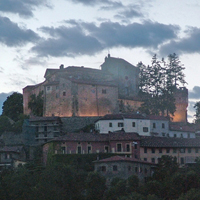
Cremolino
The name probably derives from the term Cremolino "Curtis-Maurina", an ancient Roman name. Of particular interest is the architecture castle (XIII century), the gateway to the ancient medieval village, the former Carmelite Monastery (XV century), the Romanesque churches of Bruceta and S. Agata and the Parish Church.
The castle, recently restored, looks back, in its oldest part of the century. XI. Born as a warning and defense, has always maintained, in its fine architecture, and this characteristic is considered, in its kind, one of the most valuable of the Alto Monferrato. The village is accessed by the ancient Porta Maggiore, where you can still see the signs of the access bridge, formerly called "bridge below," the present, however, the north entrance, where there has been no sign of the access door.
It seems, as handed down G. Gaino, which was carved on the bridge below the crest of the Community: a lion standing by the legs holds a thorny branch (G Gain: Cremolino in history - Asti, 1941).
There are still signs of the first wall (perhaps dating back to centuries X), smaller and adjacent to the castle, rebuilt in 1260 by Thomas Malaspina, to defend the village and castle are also signs of a previous port, called the "Gate of Grapple", demolished arbitrarily in 1834 by some G.B. Barletti, then mayor of the town.
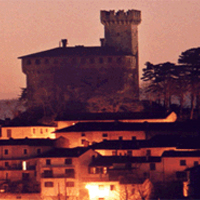
Trisobbio
The location of the settlement of Trisobbio is very special, as it is at the center of a territorial body thickly settled, between courses Orba and Bormida and the ideal line Ovada-Acqui Terme.
From the point of view of settlement, Trisobbio is a typical settlement of the ridge: not only, is the most unusual urban type that can be found on the ridge. Its urban structure is in fact "wraparound", however, different from the few other typologically similar as found in the immediate surroundings like Cavatore, Denice and Alice Bel Colle. It has a tripartite structure concentric: the ring top, at the top of the hill is occupied by the castle, which unfolds, in concentric circles, the town placed in a compact and almost ordered.
This centrality within a territory almost certainly can be connected to the structuring of civil pre-Roman world, that is, age of castles of Liguria, which arose as the deans of the territory and polarized in a position of "relative calm" in a barbaric period, have able to maintain and indeed develop fully later, in medieval times.
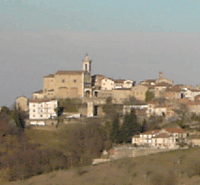
Montaldo Bormida
Montaldo Bormida is a farming town in the foothills of the High Monferrato hills between the valleys including the Bormida and Orba, the culture is that of the screw. From the top of a hill overlooking the left bank of the river Stanavazzo and is crossed by road from Rivalta Bormida to Carpeneto. On the same ridge rise the nuclei Scapitta, Albareto and Bartameloni. The City of Montaldo Bormida also includes the hamlet Gaggina and the hamlets of Selvaggia and Baretta.
We have to wait until 1164 to find, in a diploma of the Imperial Chancery, the expression "Ambo Carpineta" with which both were shown the site of Carpeneto, is to Montaldo, at least the first, so as not to have a name yet independent.
The same phenomenon is apparent even in the late twelfth and early thirteenth century, when the Marquis Boniface of Montferrat asked at Alessandria for the return of Sezzadio, S. Salvatore and "Utriusque Carpaneti". On August 21, 1203 Boniface signing a pact with the Alexandrians, and confers several concessions, including half the area of "Utriusque Carpaneti". The investiture ceremony takes place on September 17 that both Carpeneto and Montaldo (Carpeneto said lower).
Montaldo is mentioned specifically, according to Rossi, in 1348 in an act signed by the Alexandrians and Luchino Visconti at this place the Montaldo is occupied by Thomas Marquis Malaspina.
Between the middle of the '300 and early '500 had become very active presence of Milan, which was inserted in the delicate balance created between the Marquis of Monferrato, the Republic of Genoa and the so-called imperial fiefs (connected, the latter , to direct feoffment by imperial since the days of Barbarossa). Following the village of Montaldo back under the jurisdiction of Alexandria.
Is by decree of the King of Italy Vittorio Emanuele II on February 1, 1863 that the City of Montaldo was authorized to take the name of Montaldo Bormida.
Montaldo was a castle surrounded by walls with the surrounding moat; access was to the east, by means of a drawbridge. To the west, however, was defended by a very steep slope. Probably destroyed in the sixteenth century, its ruins were later used to build the church. Only remains of ancient walls and works of defense is a tower that still view the area of land where there was a moat, now transformed into a playground for the tambourine.
In addition to the tower there are now only a few place names that recall the ancient fortress where the "bridge", where there was a drawbridge (now Square Gollo), the way Sottocastello (today Via Aldo Moro Sottocastello already gone) and the name "gap" as a well, now closed, at the playground of tambourine.
The present parish church of Montaldo Bormida, dedicated to St. Michael the Archangel and Our Lady of the Rosary was built in 1686 using recycled material for the breakdown of the most remarkable furnishings castello. ABetween the vessels a dead Christ of ancient workmanship, which was brought into Good Friday procession, and a affresco of 1857 entitled "Nativity" painted by Pietro Ivaldi of Ponzone known as "the Mute". Of the primitive church, originally built much earlier and in the Castrum, are some remains incorporated in the present parsonage, which refer to the Roman culture.
Another religious building, dedicated to San Rocco and the SS. Annunziata, is located within the village, in the site of the castle, a picturesque medieval buildings.
The main wines produced are of Dolcetto of Ovada, Barbera del Monferrato and the Cortese of Alto Monferrato.
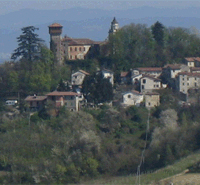
Carpeneto
Taken from the publication "For a history of Carpeneto" by Diego Moreno and Silvio Spanò
Historians trace the "Castrum Carpani" (from which Carpeneto) at antique desk strategic - military with the task of stationes, or places of stop, between the two branches of the Via Emilia that Derthona (now Tortona) and Statiellae aquae (now Acqui Terme) brought to Genoa. At a later period, the Order of the Benedictines founded monasteries throughout the area. One of these, that of Sezzè (now Sezzadio) possessed a church and assets in the territory of Carpeneto. The Saracens, with their raids, they went in the valleys of Liguria - Piemonte and destroyed in the year 999 the monastery of St. Donate, located in the current Tenuta Magnona. The farmers who lived near the monastery, after the raid, fled and settled their settlement on the near hill, safer and far from the steps of the robbers, the current fraction Madonna of the Villa. The mention of these historical events is set in a Latin language document in which, Anselm of Monferrato, authorizes the establishment of the Abbey of Spigno (999) following the destruction of the Abbey of Giusvalla made by the Saracens in 990. Lothair, King of Italy, in 945 gave in fief to Aleramo Castrum Carpani, Marquis of Monferrato. The tower of the castle has been restored at the beginning of 1900, is prior to the tenth century. Castrum were kept in the war machines and there was a military garrison stationed. The fortress was erected on top of the hill, defended by moats, covered at the end of 1800. Part fortified by masonry walls, which still exists today, was designed to Castellano, the other over a cliff, was called receptum (in local dialect "arsett"), where frank and immune protection to victims of political persecution. Under the receptum was the Town Hall, where he is the current City Hall, with its offices and prisons. In the Castle you can still see the structures of the drawbridge, and a weapons room for local garrisons, prisons and underground passages that pitfalls lie deeper than 40 meters.
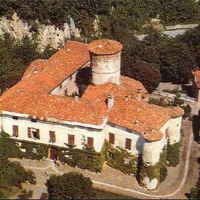
Rocca Grimalda
The town, a characteristic medieval structure, perched atop a rocky outcrop overlooking the left bank of the orbit and is reached by a road that runs along a small ridge.
From the top of the country dominates every means of communication, today as in the past, including the Oltregiogo of Ovada and the Alexandrian plain, and the view extends from the Apennines to the Monferrato hills last. Inevitable that the country has been subjected to centuries of strife and economic and military have served defensive functions and control.
The origins are uncertain and are lost in legend: sporadic archaeological finds, map references and the route of an ancient road would climb the first settlements to the presence of Ligurian population in pre-Roman times. The oldest finds were found around the 30s and 40s in the plain along the Orba, between the towns of St. Charles and deploy. It was of bricks, tiles, vases, dating from the third and first century BC, as well as the remains of burials, now largely dispersed, dating back to prehistoric times.
The first written references dating back to the Middle Ages in 963 Rock Grimalda back between the territories granted by the Emperor Otto Aleramic to the Marquis of Monferrato. Recent archaeological studies have demonstrated the existence of an ancient fortified settlement in the locality called Trionzo towards Carpeneto. This would be the ruins of a medieval castle-top partially excavated in the tufa rock: the site of considerable importance in antiquity clothed.
In 1164 Rocca Grimalda was granted to William of Montferrat in fief by Emperor Frederick I Barbarossa said. During the thirteenth century, and economic, was given a pledge with its feudal investiture to the Marquis of Gavi and, after various vicissitudes and struggles between Monferrato and Alessandria, went to Genoa. These I enveloped the Malaspina, under whose rule Rocca Grimalda through a particularly dark and troubled. For a brief period was a free city and established an alliance with Alexandria, sharing the same historical events. In 1355, said Rocca Val d'Orba, was again granted to the Marquis of Monferrato, and after the occupation of Milan, was assigned in 1440 by Filippo Maria Visconti at Galeazzo Trotti.
The Trotti, a family of soldiers of fortune, after various events which saw them displaced and reinvested in the estate, sold it finally to the Grimaldi, Genoese patricians, who dominated the country until the early nineteenth century. Even under the new feudal lords the country was not free from strife and military occupations: particularly hard was the French occupation in 1650 that involved the destruction of much of the defensive walls. Even during the War of Austrian Succession of the eighteenth century, the Austrian troops, Spanish and French fought each other for the possession of the fortress.
Rocca Grimalda from 1736 came under the Kingdom of Sardinia and then divided by the fate of Piedmont under the dominion of Savoy. The past so stormy and eventful social, and modeled has hardened the hearts of Rocchesi and is reflected in what is the oldest tradition in the country and significant: the Lachera, folk dance, handed down from generation to generation since the thirteenth century and is still danced at the carnival.
.:. TOP .:.



